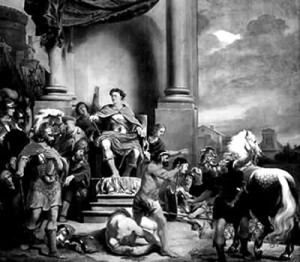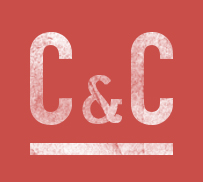Description
 Feel terrified, along with 17th-century Dutch seamen, of punishments for insubordination like that inflicted by the consul Titus Manlius Torquatus on his own son. The Roman historian Livy (8.7) tells us that Torquatus had his son beheaded for a breach of military discipline—he had disobeyed his father’s order that no officer should engage the enemy. The painting of this ancient scene by the Dutch painter Ferdinand Bol, a student of Rembrandt, is shocking in its violence and colourful detail.
Feel terrified, along with 17th-century Dutch seamen, of punishments for insubordination like that inflicted by the consul Titus Manlius Torquatus on his own son. The Roman historian Livy (8.7) tells us that Torquatus had his son beheaded for a breach of military discipline—he had disobeyed his father’s order that no officer should engage the enemy. The painting of this ancient scene by the Dutch painter Ferdinand Bol, a student of Rembrandt, is shocking in its violence and colourful detail.
The painting (created in c.1669 and now in the Rijksmuseum at Amsterdam) was commissioned by the Dutch Admiralty. Its exceptionally well-paid Committee-members wanted to adorn their administrative centre and residence, the Prinsenhof, with artworks conveying suitable messages about the navy. Bol, who had married into the wealthy Amsterdam middle class, instead of choosing a scene related to ancient sea battles or maritime trade, decided on the gruesome use of Roman history to justify savage punishments for indiscipline. For this and three other allegorical paintings, he was paid an enormous fee.
Mutinies and disorder were an incessant problem amongst the impoverished and often destitute men who served aboard the ships which ran the Dutch maritime empire. Captains needed—and utilized—barbarous punishments in order to try to maintain discipline, some of which make being beheaded look almost humane.
 The recognized and authorized punishments for mutiny or homosexuality included the death-sentence, nailing the culprit’s hand to the yardarm, flogging with up to five hundred lashes, and confinement in irons on water and very little bread. Most feared of all was ‘keel-hauling’, in which the culprit was stripped and dragged all the way under the ship from one side to another, to suffer near-drowning. All who were keel-hauled suffered lacerations of their flesh from barnacles which left permanent scars.
The recognized and authorized punishments for mutiny or homosexuality included the death-sentence, nailing the culprit’s hand to the yardarm, flogging with up to five hundred lashes, and confinement in irons on water and very little bread. Most feared of all was ‘keel-hauling’, in which the culprit was stripped and dragged all the way under the ship from one side to another, to suffer near-drowning. All who were keel-hauled suffered lacerations of their flesh from barnacles which left permanent scars.
The execution of the ancient Roman underscored the simple and acute form of class conflict and its violent solution which underlay the financial success of the Dutch maritime miracle.




